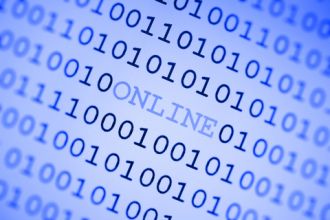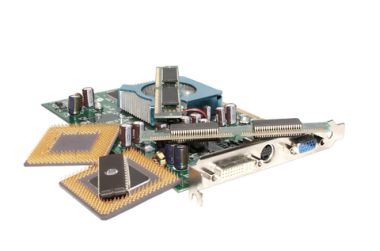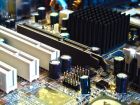Basic Computer Operation.
So, how does a computer work?
What is the basic computer operation? I don't want to insult your intelligence here but, computers work with electricity. No, really. If you don't plug the PC in, it's not going to work.
Electricity forms the basis of all computers and basic computer operation. It's like the fuel that powers it. No electricity, no computer.
The thing is that all computers work with a numeric system called, the binary numbering system. Binary, cause it uses only two digits, a zero and one (0 or 1). We humans use a decimal system with numbers ranging from 0 to 9. With these 10 digits we can count to any number known to man.
Binary representation
So, a computer is pretty stupid. It can only count 0 and 1. Well yes, but with those two numbers any decimal number can be created. More on this later.
But why only 2 numbers? The answer is quite simple. Remember that computers work with electricity. So, a light switch, for instance, can only be switched on or of.
Say you stand at a light switch in your house. If you flip the switch off, that's a zero, if you flip the switch on, that's a one. How easy is that.
In computers the light switch is actually circuits that are switched on or off.
Of course the computer does this very fast so the fact that you only gave 1's and 0's doesn't matter. Now that's clever.
Of course it's not just electricity. A computer is made up of a lot of components. There are, however, some basic computer components that make it work such as the CPU (Central Processing Unit), RAM (Random Access Memory), hard disks, motherboard and computer case.
The question remains, how does the computer manage to processes all these 1's and 0's? As we said before, a computers needs electricity to work. This electricity is input via the power supply. There is a "kettle plug" at the back of the power supply.
The power that goes into the power supply is raw power. It's what the power supply company provides. This is also known as AC (Alternating Current) power. AC power is very unstable and no computer component would survive this violent alternating current.
The computer power supply actually converts this power into DC (Direct Current). DC power is just more stable. It takes the violent alternating current and stabilizes it into direct current.
Some components such as the CPU and memory have another set of power converters called DC to DC converters. This takes the DC current from the power supply and makes it even more stable by sending it through another direct current converter. This ensures that the CPU, which is a very sensitive component, gets a steady stream of electricity.
This power is then sent through a quarts crystal that vibrates when a current is passed through it. Quarts crystals are fascinating rocks. I'm not going into detail here, but do a search and learn more about this magical piece of rock.
The vibration of this crystal is known as a frequency or clock of the device. Now that we have this clock, we can now count and manipulate the electricity to switch on and off. Just like a light switch.
And you thought computers are boring.
Of course there's more to basic computer operation than bits and bytes. The CPU (Central Processing Unit) or processor is the brain of the computer. All calculations are handled by the CPU. These days more and more stuff are built into the CPU such as wi-fi and graphics.
Basic computer operation - PC components
Temporary storage is provided by RAM (Random Access Memory) or computer memory. The CPU will store and read information from memory into it's own temporary storage area called cache. Cache is very similar to RAM, it's just faster. There's different levels of this cache. Level 1 and 2 is usually on the CPU and level 3 is, off chip.
Permanent storage is provided by a device called the hard disk. Whenever the CPU is finished with processing data, it writes it RAM and then to hard disk. When the computer is powered off, all data in RAM and cache is lost. That's why a hard disk is needed so data can be stored and retrieved at a later stage.
All of the components that we talked about fits onto a component called the motherboard. This component ensures that the data moves around your PC. Everything runs from the motherboard.
There are other components such as graphics, keyboard, mouse and computer ports. These all work together to make your PC work. This is what basic computer operation is all about.
Click on the links below for information on input process output and the binary numbering system.
Learn More
Input Process OutputLearn more about this very crucial part of how a computer works.
Bits And Bytes
Learn more about this fascinating concept on how computers use 1's and 0's to represent data and text.
Return from Basic Computer Operation to What is my Computer



